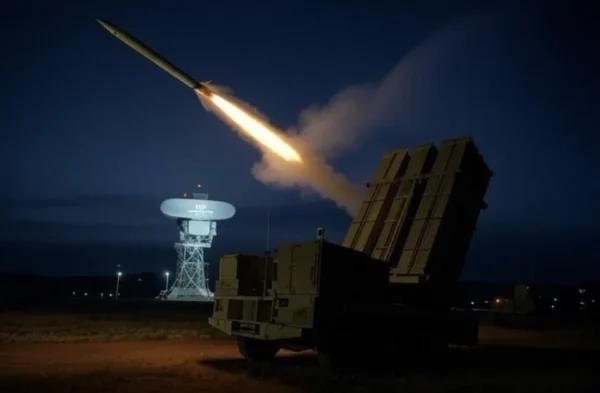
The Terminal High Altitude Area Defense (THAAD) system is a state-of-the-art missile defense technology developed by the United States to intercept and destroy short, medium, and intermediate-range ballistic missiles during their terminal phase of flight. Unlike traditional missile defense systems that rely on explosive warheads, THAAD utilizes a “hit-to-kill” approach. It neutralizes threats by physically colliding with incoming missiles. This method enhances precision and also minimizes collateral damage, making THAAD an effective solution for protecting civilian and military assets.
Key Features of THAAD
THAAD is equipped with several advanced features that significantly enhance its operational capabilities:
- Range and Coverage: The system can engage targets at altitudes up to 93 miles (150 kilometers) and distances of approximately 125 miles (200 kilometers). This extensive range allows THAAD to cover a larger area than many traditional systems, providing robust defense against various missile threats.
- Components: A typical THAAD battery consists of: Launchers – Six truck-mounted launchers, each capable of carrying eight interceptors.
- Radar System: The AN/TPY-2 radar system tracks incoming missiles from distances up to 3,000 kilometers, providing early warning and continuous tracking.
- Fire Control Unit: This unit coordinates the launch and targeting of interceptors, ensuring rapid response to incoming threats.
- Operational Crew: The system is operated by about 95 soldiers, enabling quick deployment in response to missile threats. The crew undergoes extensive training to ensure operational readiness in various scenarios.
Development and Deployment
This event underscores the strategic importance of THAAD in bolstering Israel’s missile defense capabilities amid escalating regional tensions. The Terminal High Altitude Area Defense (THAAD) system, developed by Lockheed Martin in the 1990s, is a U.S. anti-ballistic missile defense system designed to intercept and destroy short-, medium-, and intermediate-range ballistic missiles during their terminal phase.
In October 2024, following ballistic missile attacks by Iran, the United States deployed a THAAD battery to Israel to enhance its integrated air defense system.
On December 27, 2024, this THAAD system was utilized for the first time in Israel to intercept a projectile launched by Iran-backed Houthi rebels from Yemen, targeting Ben Gurion Airport in Tel Aviv.
The interception occurred outside Israeli airspace, preventing potential casualties and infrastructure damage.
Operational Mechanism
THAAD employs a sophisticated radar system that tracks incoming missiles from significant distances. Upon detecting a threat, the fire control system coordinates the launch of interceptors to neutralize missiles during their final descent phase. This capability is crucial for defending against attacks on populated areas or military installations. The interceptors themselves are designed to maneuver in flight to ensure accurate targeting. By destroying incoming missiles at high altitudes, THAAD significantly reduces the risk of debris falling on civilian areas.
In a first, U.S.-deployed THAAD air defence system in action against #Houthi rebels over #Israel pic.twitter.com/5C9PLG3bfc
— The Times Of India (@timesofindia) December 28, 2024
Strategic Importance
The strategic significance of THAAD lies in its ability to provide multi-layered defense against ballistic missile threats. It complements other systems like Aegis and Ground-based Midcourse Defense, forming an integrated defense network that enhances overall security. By intercepting missiles at high altitudes, THAAD contributes to a more comprehensive missile defense architecture. Moreover, THAAD’s deployment serves as a deterrent against potential aggressors. Its presence reassures U.S. allies in regions with heightened tensions, such as East Asia and the Middle East. As global missile threats increase, systems like THAAD will remain essential components of national and allied defense strategies.
To summarize, THAAD represents a pivotal advancement in missile defense technology. Its recent deployment in Israel underscores its critical role in enhancing regional security amid escalating tensions in the Middle East. As nations face increasingly sophisticated missile threats, systems like THAAD will be vital for safeguarding lives and infrastructure worldwide.






